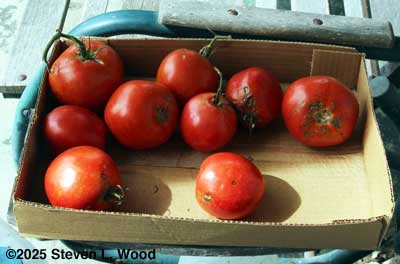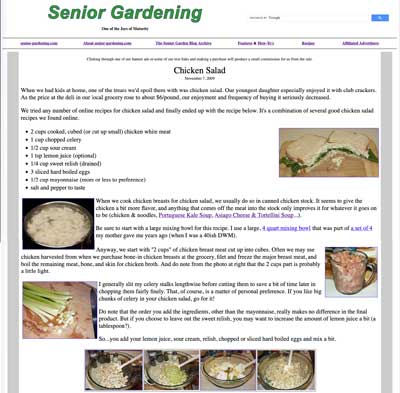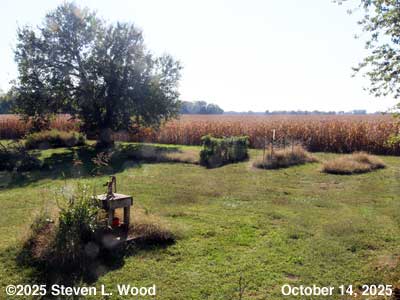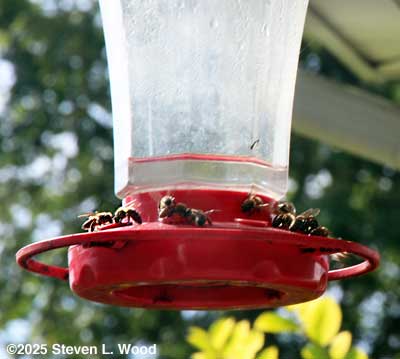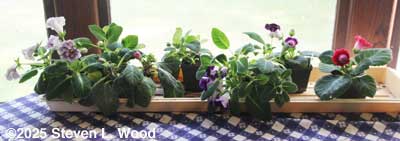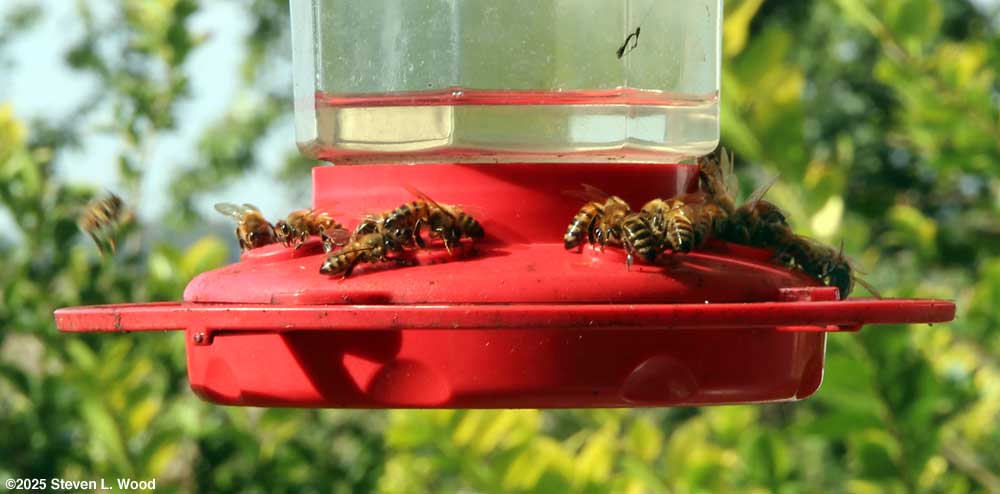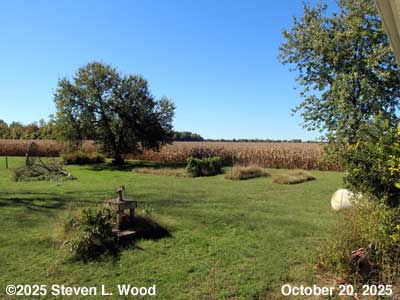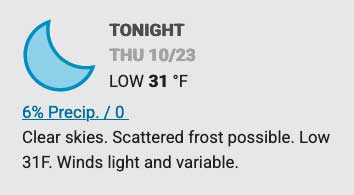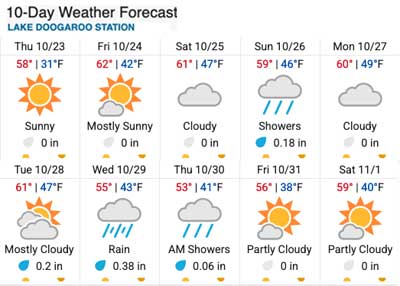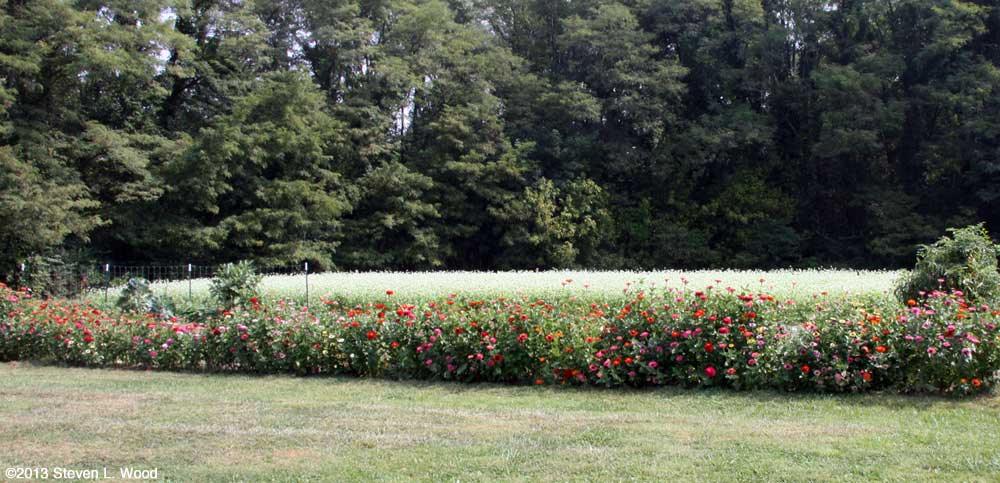|
| Affiliated Advertisers |
The Old Guy's Garden Record Clicking through one of our banner ads or some of our text links and making a purchase will produce a small commission for us from the sale. As we wind down a rather dismal gardening season, my efforts will turn to cleaning up our various garden plots. All four of our raised beds are currently overgrown with weeds. Both of our asparagus patches will also require some attention. Our extended weather forecast suggests more clear, warm, mostly dry weather for the next week or so.
|
|
Frustrated with no tomatoes, I took our lopping shears out to our patch of butternut squash vines, dropping off a heavy bucket of kitchen scraps on the way. I ended up bringing in eleven butternuts. Only one or two of them were small. I left a dozen or so on the vine, as they were still showing some green. And sadly, there were six or seven butternuts in various stages of decay that should have been harvested weeks ago. We grow our butternut squash on the site of the previous year’s compost pile. While I give the butternut plants a bit of starter fertilizer at transplanting, they get all the nutrition they need from the rich soil that the compost pile created. I sterilized a kettle of potting mix this week in anticipation of transplanting thirteen young gloxinia plants from three to four and four and a half inch pots. Two of the plants from an otherwise failed planting already had bloom buds on them, so they went to our dining room table. The rest of the plants were started in June, so they may begin to bloom in a couple months. They stayed under our plant lights in the basement. I'm about done saving gloxinia seed for this year. The plants pictured above won't get pollinated and have to try to mature seed.
While our Butternut Mock Yams recipe and just splitting and cleaning the butternuts before baking them with butter and brown sugar remain favorites, some of the recipes looked interesting. An email from the Garden Tower Project caught my eye as they announced their new Garden Tower 2. With the space we're blessed with, I doubt I'll be using a Garden Tower...unless I become disabled. I bought some mini chicken salad sandwiches at the deli of our Sullivan (IN) Baesler's Market this week. We quickly devoured them. Baesler's has always had great chicken salad. That put me onto making chicken salad this morning. Our recipe is every bit as good as Baesler's, but doesn't cost $7.99/pound. I began the recipe page with "When we had kids at home, one of the treats we'd spoil them with was chicken salad. Our youngest daughter especially enjoyed it with club crackers. As the price at the deli in our local grocery rose to about $6/pound, our enjoyment and frequency of buying it seriously decreased."
I hadn't picked tomatoes yesterday. When I picked this afternoon, I ended up with tomato juice on my hand when gripping several tomatoes. I think I need to go back to picking every day. And as it was, I only got three so-so ripe tomatoes. On a more positive note, our weather outlook still looks frost free for the next week or so. Our first frost date for this area is October 18. And lastly, we're into the time of year when I have a heater turned on overnight in my office, but have a window open with a fan running while writing this afternoon.
This morning when it was still cold out, no bees were present at the feeder. But once it began to warm up outside, the honeybees returned. They must like the sugar water that makes up the birds’ nectar. When all this started, the feeder was a little less than half full. It's now about and eighth full! When it's empty, I'll take it down to soak and clean it. But I may put out a saucer of sugar water for the bees. BTW: We make the nectar with a 4:1 ratio of water to sugar. Late in the season, I increase the sugar content to help the birds add weight before they begin their migration. The bees seem to like our current water to sugar ratio.
One plant went to a dark corner of the basement as it had gone dormant. Several other plants heading for dormancy went to the sunroom. There are also a few younger plants in the sunroom trying to come into bloom.
And our June planted gloxinias under our plant lights in the basement seem to be thriving. I really wasn't happy with my shot yesterday of honeybees on our hummingbird feeder. But conditions then weren't ideal. Today, it was sunny when I took the shot, and I got much better focus. I also went a step higher on our mini-stepladder to get a better angle. At my age, I normally try to avoid ladders of any size. When I moved gloxinia plants around yesterday, I trimmed back the last of our seed bearing plants. Today, I dumped the last of our saved gloxinia seed into a vial that went into the freezer. I haven't saved that much gloxinia seed the last two years. While hundreds of seeds, I looked at a vial of seed from 2021 which was full...probably thousands of the tiny seeds. And the seed has stored well, as I used it for our June planting. While the sun is out now (around noon), we're supposed to get some significant rain this afternoon, tonight, and tomorrow. We really need the rain. Thursday's Drought Monitor release showed our county had improved from "Moderate Drought" to "Abnormally Dry."
I'd hoped to burn boxes on our burn pile this morning, but the wind picked up. Even though things are still wet from the rain, I'm hesitant to burn the pile. I did get out and pick six more butternut squash this morning. Two very large but very green butternuts remain on the vines. Yesterday when I looked out our back door, there were seven or eight wild turkeys in the back yard. They scattered when I opened the door to get a picture of them. Seeing turkeys in our area isn't unusual. But I've not seen them in our yard before yesterday.
Getting ready for a frost involved picking tomatoes and the last of our butternut squash. I got around six nice tomatoes and sadly, left a bunch of orange tomatoes on the plants. The ones not picked weren't far enough along to ripen inside. The two butternut squash I cut still had green streaks on their sides, but may ripen a bit on our drying/curing table. Butternuts can do that if they're far enough along. We've had lots of strong winds that last few days, limiting the honeybees ability to get to our hummingbird feeder of sugar water. When things warmed up a bit today, I saw a few bees at the feeder. Doing some online research, I found that honeybees won't try to fly in winds beyond 15-20 MPH. We've been experiencing wind gusts of 30 MPH and more. The bees also are hesitant to leave the hive in temperatures of 50°F and lower. No frost this morning. And our extended forecast from the Weather Underground suggests there won't be a chance of frost for another week.
If you've never farmed, the unsettled feeling you get when finishing your last field is incredible. You hear every unusual sound your machinery makes and every bump you feel in the field. In the "been there, done that" category, I have memories. The first year I brought in ear corn, I borrowed a neighbor's two-row corn picker. Nearing the end of the harvest, the corn picker blew its gearbox. Getting it rebuilt cost several hundred dollars, but I got my corn picked. In later farming years, I used a one row corn picker borrowed from a teaching friend. We fed our ear corn to our hogs and cattle and also sold some of it the folks who wanted cattle feed. My efforts today were toward watering all of our gloxinia plants and saving more Moira tomato seed. My first two batches of saved Moira seed didn't germination test up to our standards, so one more try is necessary. We should be able to pick more ripe Moiras in the next few frost free days. Sunday, October 26, 2025 - Exchange Listings I received an email last week inquiring about seed for the Japanese Long Pickling cucumber variety. I realized that I hadn't updated my listings for saved seed we offer on the Seed Savers Exchange. So I quickly updated our offerings. Deep Red Tomatoes
Quinte (70) - Also known as Easy Peel, our Quinte plants produced unusually large tomatoes in great volume in 2021. Quintes are another Jack Metcalf variety. As with most of his releases, they are an early, semi-determinate, open pollinated plant. Quinte tomato seed is also available from the Turtle Tree Seed Initiative, grown out from seed we gave them. Seed produced in 2024. Both our Quinte and Moira tomatoes have increased in size in recent years. Rather than some special breeding, I'm guessing that is due to me adding a shovelful of compost to each planting hole.
Our how-to, Growing Tomatoes, tells all about how we grow our tomatoes. Let me add here that the Turtle Tree Seed Initiative grew out some Quinte and Earlirouge tomato seed we gave them and offer the varieties online. Peppers Earliest Red Sweet (65) - The Earliest Red Sweet bell pepper variety produces peppers a bit smaller than popular hybrids. But what its peppers lack in size, it makes up for with an incredible volume of peppers, especially late in the season.
Note that I often add some ERS peppers to our Hungarian Paprika peppers when making ground paprika. Seed produced in 2024. Here's a tip from our Growing Peppers how-to that suggests a solution if your pepper plants don't perform well for you. For years, our pepper plants looked good right up until the time they set fruit. Then they'd languish and eventually die. On a luckshot, I began adding a little Maxicrop Soluble Seaweed Powder to my transplant solution for the peppers. Our pepper problems magically vanished! Apparently the seaweed had some necessary element in it that our soil lacked. Maxicrop is a bit expensive, but it doesn't take much of it to do the trick.
Cucumbers
Butternut Squash
Note that the squash make absolutely fabulous butternut squash yams. Gloxinias
Zinnias - Zinnias were my mother's favorite flower. In honor of her, and because they do so well in our East Garden plot, I often border the plot with an eighty foot row of them. Our zinnias were originally from the State Fair variety, but over the years I've bought seed packets of other varieties and mixed them in. The result is a mix of very tall and shorter zinnias with a wide variety of blooms. Seed produced in 2024.
Our how-to: Saving Tomato Seed. I also took down our hummingbird feeder. I'd left it up long past our last hummingbird sighting. Honeybees had been feeding at it until it first got very windy and now rather chilly out. The feeder got soaked for several hours and brushed to remove mold and presumably hummingbird snot or poop from it. Friday, October 31, 2025 - Halloween
SSE Listings You might be surprised by our "Seed produced in xxx" in our Seed Savers Exchange listings. We freeze all of our saved seed after thoroughly drying it. We find that keeps the seed viable for years! Other than picking butternuts and tomatoes, there wasn't much going on in our garden plots this month. We did enjoy seeing lots of honeybees visiting our hummingbird feeder. Also, seeing wild turkeys in our yard was a treat. And we saved lots of Moira tomato and butternut squash seed this month. I also found an interesting recipe for Butternut Squash Soup that I want to try.
Contact Steve Wood, the at Senior Gardening |
| Affiliated Advertisers |
©2025 Senior-Gardening.com






